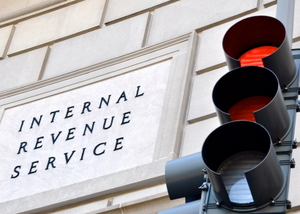
Current tax administration reveals agencies’ muddled application of “force of law” determinations.
Under well-known administrative law cases like American Mining Congress v. Mine Safety and Health Administration, whether a particular rule is legislative in character and must go through notice-and-comment rulemaking depends upon whether the rule carries the force of law. Similarly, under United States v. Mead Corp., whether agency action is eligible for Chevron deference (or only receives the ostensibly lesser Skidmore respect) turns on whether the action carries the force of law. But what does it mean for agency action to carry the “force of law”?
The force of law is an ambiguous concept, whether it is used to determine if a rule is legislative or to determine if Chevron deference applies. Does the force of law mean the same thing for both questions? Contemporary tax administration reveals the problem, both in agency practice and in judicial application. Specifically, two rulemaking practices common in tax administration show how hard it is for regulators and courts to navigate the uncertainty.
First, the Department of Treasury regularly issues “temporary” regulations without notice and comment. Treasury usually accompanies its temporary regulations with a notice of proposed rulemaking and then, months or years later, issues a replacement “final” regulation that take into account the public comments received. Meanwhile, taxpayers who fail to comply with the temporary regulations face statutory penalties.
Treasury’s use of temporary regulations is not especially unique. Many agencies issue legally-binding temporary or interim-final regulations, though typically with an accompanying assertion of good cause to comply with the Administrative Procedure Act (APA). By contrast, Treasury almost never claims good cause when it issues temporary regulations. Instead, Treasury contends that its temporary regulations are exempt from notice and comment as interpretative rules. Meanwhile, in litigation, the government claims Chevron deference for temporary Treasury regulations. Can temporary Treasury regulations lack the force of law for procedural purposes but possess the force of law for Chevron purposes? The jurisprudence is mixed.
Second, as with many other agencies, the Internal Revenue Service (IRS) relies heavily on informal guidance documents—revenue rulings, revenue procedures, and notices—to communicate its interpretations of the tax laws. The IRS does not subject these documents to notice-and-comment rulemaking. The IRS has always maintained that its guidance documents, while authoritative, lack the legal force of Treasury regulations. But Treasury regulations extend statutory penalty provisions to taxpayers who fail to comply with IRS revenue rulings and notices, as well as some revenue procedures. Meanwhile, for several years, the government in litigation claimed Chevron deference for these documents as well, although it backed away from that position in 2011. Can these guidance documents carry penalty potential and still lack the force of law for APA and Chevron purposes? Here, too, the jurisprudence is muddled.
In Mayo Foundation for Education and Research v. United States, the Supreme Court held that the Internal Revenue Code gives Treasury the power to act with the force of law and that Treasury’s promulgation of regulations using notice and comment represents an exercise of that authority. Although the Mayo decision focused on those regulations’ eligibility for Chevron deference, it is hard to imagine that a court would nevertheless conclude that those same regulations are interpretative rules that lack the force of law for APA purposes. While the courts have recognized notice and comment rulemaking as an indicator of a rule’s legislative character and Chevron eligibility, they have rejected the absence of those procedures as determinative of either question. Instead, the Court has emphasized congressional delegation as the dispositive factor. Consistent with this emphasis, whatever it means at the margins for agency action to carry the force of law, statutory penalties for failing to follow agency rules should serve as a definitive signal that Congress intended those rules to carry the force of law for both the APA and Chevron deference. Because Treasury’s construction of the tax code’s penalty provisions extends to noncompliance with temporary Treasury regulations and IRS guidance documents, those agency actions carry the force of law. Therefore, courts should evaluate the legal interpretations advanced in these formats using the Chevron standard but should also require Treasury and the IRS to use notice-and-comment rulemaking in their promulgation.
In practice, however, reaching the right doctrinal conclusion may cause even more problems. Treasury has been issuing temporary regulations without good cause for more than twenty years. Treasury has since finalized most of those temporary regulations with post-promulgation notice and comment. But if the temporary regulations were procedurally defective, at least some courts may feel bound by precedent to find the succeeding final regulations to be similarly invalid. Meanwhile, taxpayers have relied upon and organized their affairs to comply with these regulations. Reviewing courts would be right to ask whether invalidating so many regulations would do more harm than good. Also, while the IRS often uses revenue rulings, revenue procedures, and notices to communicate controversial legal interpretations, the IRS also relies on those formats for minor housekeeping matters that are utterly uncontroversial and essential to efficient tax administration. Requiring notice and comment for all such guidance would waste scarce agency resources and likely dry up this important tool for communicating with taxpayers. On the other hand, extending Chevron deference to temporary Treasury regulations and guidance documents that lack notice and comment would be appalling to a tax community already troubled by the degree of agency discretion extended by the Mayo decision, and would risk undermining respect for and legitimacy of tax administration as a whole.
Treasury is the source of the problem, both in its indiscriminate use of temporary Treasury regulations without good cause and through its association of penalties with temporary regulations and guidance documents. The IRS contributes to the problem by using the same formats for substantive guidance and minor housekeeping matters when it could easily segregate those functions. Treasury and the IRS have the power to change both the penalty regulations and their practices, at least prospectively. Absent judicial action, they are unlikely to do so.
For courts, the best doctrinal answer is case-by-case rather than categorical. For example, some circuit courts have evaluated regulations that started as procedurally-flawed interim-final rules by assessing the agency’s open mindedness or the prejudicial effect of the procedural errors. Applying such an incremental approach in the tax context would allow courts to signal their disapproval and police Treasury’s past use of temporary regulations for arbitrariness while still upholding most Treasury regulations.




